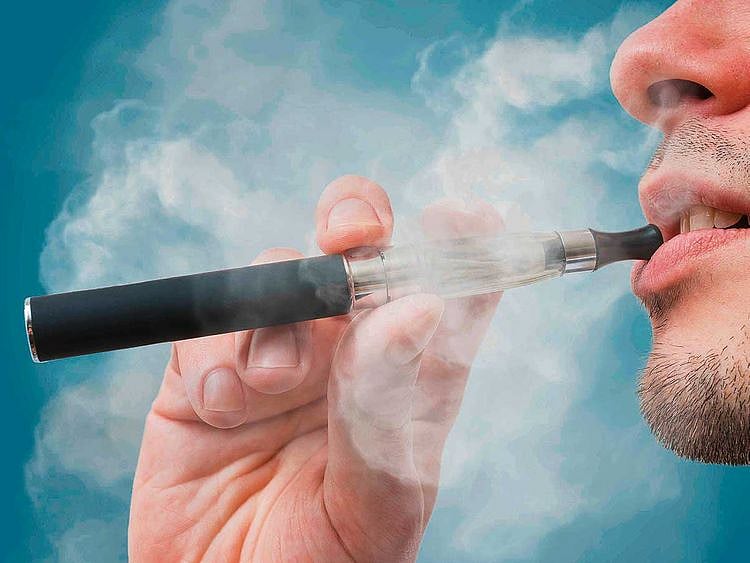Doctors warn against e-cigarette use after UAE ministry alert
Seizures, popcorn lungs among side effects reported among e-smokers

DUBAI: Doctors in the UAE have warned the public against the dangers of smoking e-cigarettes, after the Ministry of Health and Prevention issued a health alert in the wake of several seizures being reported among e-cigarette users in the United States.
According to western media reports, the Food and Drug Administration in the US is reviewing these reports of seizures among e-cigarettes users, mainly in young people, to see if there a definitive link.
“I am not surprised, it was just a matter of time before we could see all the bad effects of vaping,” Dr. Elie Abdallah, Consultant Pulmonary and Sleep Medicine at Mediclinic Welcare Hospital, told Gulf News.
He said, “The e-cigarette is relatively a new kid on the block as it was first introduced in China in 2003 and hit the western markets in 2006. It hasn’t even been two decades yet, and we’re already seeing many side effects — from popcorn lungs (massive calcification of lungs) to seizures in the young population.”
He said when a nicotine-naive youngster indulges in vaping, it can potentially have serious consequences. “The brain in these cases is not fully formed yet. A substance like nicotine, which is in a concentrated form in the case of e-cigarettes, stimulates the central nervous system, leading to hyperactivity of the brain cells and seizures.”
He said e-cigarettes need more stringent regulations than regular cigarettes as their side effects begin to unravel.
He said e-cigarettes are a huge public health concern because very young children use them as a precursor to having the real thing, since they elude smell and detection by teachers and parents.
Dr Sunil Vyas, Specialist, Pulmonology, at Aster Hospital, Al Qusais, explained how e-cigarettes, essentially electronic devices, heat a liquid — usually comprising propylene glycol and glycerol, with or without nicotine and other flavours stored in disposable or refillable cartridges or a reservoir — into an aerosol (vapour) for inhalation.
“Hence the term vaping — vapours are produced just like in cigarette smoke.”
He said, “In 2006, media campaigns promoted e-cigarettes as safe and helpful in smoking cessation, but the number of non-smokers using e-cigarettes significantly increased over time,” he said, adding how their detrimental effects began to surface between 2012 and 2014.
Dr Vyas said, “That is why in 2014, the International Forum on Respiratory Societies came up with a position statement on the use of e-cigarettes and asked to put a restriction or rather a ban on e-cigarettes till further evidence on its benefit.”
“Even if e-cigarettes do not contain nicotine, they can have potential toxic aldehyde emissions, which are known to be formed following the heating of the EC-liquid main components propylene glycol and glycerol as thermal decomposition products. There are other contaminants inhaled by an EC smoker during a vaporisation. These chemicals have been found to further damage the lungs with reduction in immunity and chronic obstructive disease.”
Health Ministry Alert
A circular issued by the Ministry of Health and Prevention to all health care facilities has recommended that doctors:
1. Ask patients about e cigarettes use (eg vaping) particularly when providing care for seizure.
2. Ask for particulars of brand, duration and nature of use
3. Consider testing cotinine levels in addition to urine toxicology screening
4. Report adverse reactions
Sign up for the Daily Briefing
Get the latest news and updates straight to your inbox
Network Links
GN StoreDownload our app
© Al Nisr Publishing LLC 2025. All rights reserved.